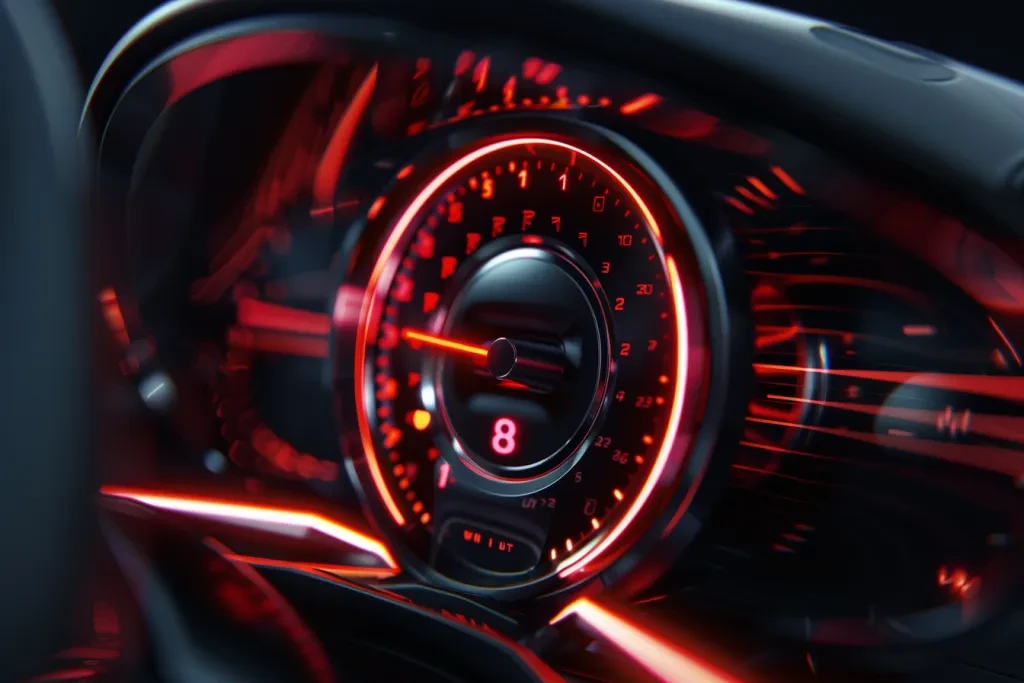
Where is the Tachometer Sensor Located in Your Vehicle?
Share
When it comes to understanding your vehicle's performance, one crucial component that often comes into play is the tachometer sensor. This little device is vital for monitoring your engine's revolutions per minute (RPM), providing essential data that helps enhance your driving experience. But if you're wondering where is the tachometer sensor located in your vehicle, you're not alone. Many car enthusiasts and professionals seek this information for various reasons, including troubleshooting or enhancing performance.
The tachometer sensor, often referred to as the engine speed sensor, is typically situated near the engine itself. This location can vary based on the make and model of the vehicle, but it usually resides close to the crankshaft or the transmission. Understanding its location is essential for anyone involved in automotive technology or repair, as it directly impacts the tachometer's reading and, subsequently, the overall performance of the engine.

Understanding the Basics of Tachometers
Before delving deeper into the specifics of the sensor's location, its crucial to understand what a tachometer is and how it functions. A tachometer is an instrument that measures the speed of rotation of an object, often an engine shaft, in revolutions per minute (RPM). This information is vital for several reasons, including preventing engine over-revving and optimizing fuel efficiency.
Tachometers can be either mechanical or electronic. Mechanical tachometers, which use a needle and dial to display RPM, are often found in older vehicles, while modern vehicles typically employ electronic tachometers that provide more accurate and quicker readings. These electronic tachometers receive signals from the tachometer sensor, thereby making knowledge about its location critical for tech professionals and enthusiasts.
Typical Locations of the Tachometer Sensor
So, where is the tachometer sensor located in different vehicle types? The answer varies, but here are some common locations:
1. Near the Crankshaft
Most commonly, the tachometer sensor is located near the vehicle's crankshaft, which is essential for measuring the rotational speeds of the engine. The sensor utilizes a magnetic or optical signal to determine the crankshaft's position and speed, which are then translated into the RPM readings displayed on the tachometer.
2. Attached to the Transmission
In several vehicles, especially those with automatic transmissions, the tachometer sensor may be located on or near the transmission assembly. This sensor picks up signals related to the transmission's performance, which aids in calculating RPM.
3. Behind the Dashboard
In some vehicles, especially older models, the tachometer sensor may be housed behind the dashboard in proximity to the tachometer gauge itself. This design makes it easier for the sensor to relay information directly to the gauge.
4. In Performance Vehicles
Performance vehicles often utilize aftermarket tachometers, which may have sensors that are installed differently for optimized readings. In racing or modified vehicles, its essential to consult the manufacturer's specifications or user manuals for the precise location.
How to Access the Tachometer Sensor
Once you have identified where the tachometer sensor is located, accessing it varies by vehicle:
1. Engine Bay Access
In most cases, you need to open the hood of the vehicle. Ensure the engine is off and cooled down before attempting to work on any component.
2. Remove Obstacles
Sometimes, other engine components may obstruct access to the tachometer sensor. Be prepared to remove any covering parts, such as air boxes or covers, for better visibility.
3. Use the Right Tools
Standard tools such as wrenches and screwdrivers may be necessary for accessing the sensor. Always refer to your vehicles repair manual for specific instructions.
Troubleshooting Tachometer Issues
Now that you know where the tachometer sensor is located, understanding how to troubleshoot common issues can further your expertise:
1. Erratic Readings
If your tachometer is giving erratic or inaccurate readings, its often due to a fault within the tachometer sensor itself. This could be caused by electrical signals failing to transmit correctly.
2. Complete Sensor Failure
A complete failure of the tachometer system can arise due to a burned-out fuse or a faulty sensor. Confirm that all electrical connections are secure and check for any blown fuses that might be impacting performance.
3. Poor Engine Performance
Sometimes, issues with engine performance, such as misfires or stalling, could link back to a malfunctioning tachometer sensor. Understanding these connections can aid in diagnosing vehicle issues more efficiently.
Resources on Tachometer Technology
If you are interested in diving deeper into tachometer technology, check out our article on Tachometer Basics for a comprehensive overview. For those particularly interested in performance applications, learning how tachometers play a role in maximizing performance can be valuable knowledge.
Conclusion
Understanding where the tachometer sensor is located is crucial for any vehicle owner, tech professional, or enthusiast. Whether it's for troubleshooting, enhancing performance, or simply gaining a deeper understanding of your vehicle, being informed can lead to better decision-making.

FAQ
What is the purpose of a tachometer sensor?
The tachometer sensor measures the engine's RPM, helping drivers monitor and maintain optimal performance.
Can I replace the tachometer sensor myself?
If you have basic mechanical skills and the right tools, you can replace the tachometer sensor. Always consult your vehicle's manual for guidance.
Are there different types of tachometer sensors?
Yes, there are mechanical and electronic tachometer sensors, each operated differently but serving the same primary function.
For more information familiarizing yourself with different tachometer types, read about how tachometers work and the roles they serve in various automotive applications.
